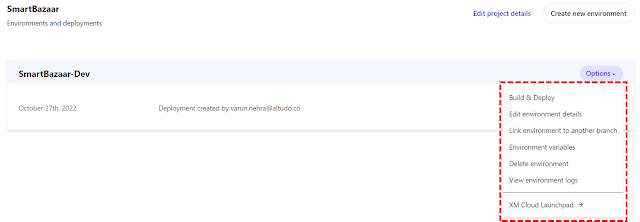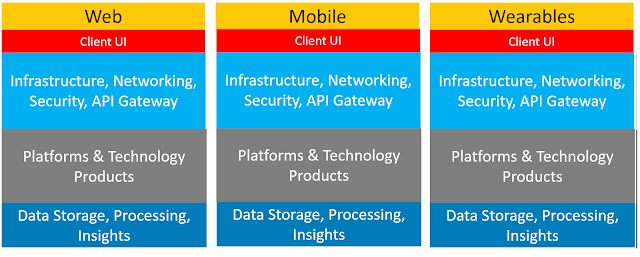Experience Marketing: The Crawl, Walk, Run of Sitecore - Part 1 - The Crawl Phase
In all my experience delivering Sitecore solutions, and having worked for a few platinum implementation partners, I have come to know the "Crawl, Walk & Run" pitch quite well. To most customers, when they hear the crawl, walk and run, I think all they hear is Phase 1, Phase 2, other parking lot items. And guess what is often a Phase 2 item...enabling xDB and its features such as content personlization, visitor identification, campaign management etc. Implementation partners actually may help you justify this by giving various excuses such as, the implementation of these featured will have a significant impact to budget, timeline, etc.
I think this has been the challenge Sitecore as a company has been trying very hard to overcome. Moreover, the past two Gartner reports show Sitecore neck to neck with Adobe as clear leaders in the Digital Marketing space but falling short on execution of it's experience management features (now digital exeprience).
One of the biggest and the most prominent steps from Sitecore to overcome this challenge came in the form of SXA (Sitecore Experience Accelerator). SXA is intended to quickly deliver the CMS portion of Sitecore and enable customers to rapidly move towards contextual marketing suite of features offered by the platform.
SXA is a great start but I think the onus will remain on the implementation partners to change the rhetoric. I think the typical digital agency sales pitch needs to fundamentally change when it comes to Sitecore offering.
If you would indulge me for a moment, here is an idea, "there is no such thing as Phase 2" when it comes to content personalization or digital marketing or contextual marketing or xDB or what ever else you wanna call it. There are certain features each implementation can and must incorporate on day 1 when it comes to xDB and contextual marketing features without any significant impact to the bottom line.
NOTE: The whole premise of this post is that you are NOT working in CMS-Only mode.
Here is something that most of you must be familiar with if you have attended a Sitecore sales pitch; the experience management cycle:
There are 4 basic steps to utilizing the full potential of Sitecore as an experience management platform. Starting with analytics, for example, you should be able to profile your content accordingly which in turn will lead you to effective personalizing of your content which will build relevant contact profiles and capture analytics data that is more relevant and continue the cycle.
Long story short, starting on day one, here are a few things you can and must do when it comes to implementing Sitecore as a platform for contextual marketing:
I think this has been the challenge Sitecore as a company has been trying very hard to overcome. Moreover, the past two Gartner reports show Sitecore neck to neck with Adobe as clear leaders in the Digital Marketing space but falling short on execution of it's experience management features (now digital exeprience).
One of the biggest and the most prominent steps from Sitecore to overcome this challenge came in the form of SXA (Sitecore Experience Accelerator). SXA is intended to quickly deliver the CMS portion of Sitecore and enable customers to rapidly move towards contextual marketing suite of features offered by the platform.
SXA is a great start but I think the onus will remain on the implementation partners to change the rhetoric. I think the typical digital agency sales pitch needs to fundamentally change when it comes to Sitecore offering.
If you would indulge me for a moment, here is an idea, "there is no such thing as Phase 2" when it comes to content personalization or digital marketing or contextual marketing or xDB or what ever else you wanna call it. There are certain features each implementation can and must incorporate on day 1 when it comes to xDB and contextual marketing features without any significant impact to the bottom line.
NOTE: The whole premise of this post is that you are NOT working in CMS-Only mode.
Here is something that most of you must be familiar with if you have attended a Sitecore sales pitch; the experience management cycle:
There are 4 basic steps to utilizing the full potential of Sitecore as an experience management platform. Starting with analytics, for example, you should be able to profile your content accordingly which in turn will lead you to effective personalizing of your content which will build relevant contact profiles and capture analytics data that is more relevant and continue the cycle.
Long story short, starting on day one, here are a few things you can and must do when it comes to implementing Sitecore as a platform for contextual marketing:
THINGS TO DO IN "CRAWL" PHASE
First thing's first...Enable GeoIP
The most important and trivial of steps you can take is to subscribe to the GeoIP service. Most sites these days recognize your location, hence the least you can offer your customers is location based experience.
Not to forget, even if you are in CMS-only mode, you can still provide some crazy personalized content just based on GeoIP data.
- Content Profiling - Crawl Phase
Content profiling is a fancy term for tagging your content with relevant digital marketing attributes that you can track with analytics. For e.g Profile cards, Personas, Goals, Page Events etc. Here is a list of a few things you need to be doing on day one:
- Create & Assign Profiles Based on Existing Taxonomy: I think this has often been a sticky point for most digital agencies who might suggest that this exercise has a significant impact on budget and timeline while using terms like "this maybe a phase 2 item for content strategy". Here is one way to quickly get started, use your content taxonomy to create default profiles (profile/pattern cards) and assign them to your content items just as you would assign taxonomy tags.
- Assign The Following Built-in Goals: "Leave a Message, Register, Login, Like". Note that I did not mention "create goals" but just "Assign Goals". There are some built-in goals that you can assign to your content right off the bat. For e.g. Register, Login, Like, Leave a Message. Most websites have a contact us page, or a like button. There is no reason to not assign these goals to appropriate content items.
- Assign The Following Built-in Page Events: "Download, Information, Login Failed (not sure why this isn't under failure events), Logout, Print, Register Failed, Register for Event". These are come of the most common built-in page events that you can start tracking on day-one.
- Assign The Following Built-in Failure Events:"Error, Page Error, Page not found, No Search Hits found". Now these are some of the most common failure events I think we can all agree, are part of every implementation, 404 error handling, 500 error handling, no search results found etc.
These should help you collect enough analytics to get you ready for the "Walk" phase.
- Content Profiling - Crawl Phase
Content profiling is a fancy term for tagging your content with relevant digital marketing attributes that you can track with analytics. For e.g Profile cards, Personas, Goals, Page Events etc. Here is a list of a few things you need to be doing on day one:
- Create & Assign Profiles Based on Existing Taxonomy: I think this has often been a sticky point for most digital agencies who might suggest that this exercise has a significant impact on budget and timeline while using terms like "this maybe a phase 2 item for content strategy". Here is one way to quickly get started, use your content taxonomy to create default profiles (profile/pattern cards) and assign them to your content items just as you would assign taxonomy tags.
- Assign The Following Built-in Goals: "Leave a Message, Register, Login, Like". Note that I did not mention "create goals" but just "Assign Goals". There are some built-in goals that you can assign to your content right off the bat. For e.g. Register, Login, Like, Leave a Message. Most websites have a contact us page, or a like button. There is no reason to not assign these goals to appropriate content items.
- Assign The Following Built-in Page Events: "Download, Information, Login Failed (not sure why this isn't under failure events), Logout, Print, Register Failed, Register for Event". These are come of the most common built-in page events that you can start tracking on day-one.
- Assign The Following Built-in Failure Events:"Error, Page Error, Page not found, No Search Hits found". Now these are some of the most common failure events I think we can all agree, are part of every implementation, 404 error handling, 500 error handling, no search results found etc.
These should help you collect enough analytics to get you ready for the "Walk" phase.
- Content Personalization - Crawl Phase
Assuming you have already enabled GeoIP service, start with personalizing your home page displaying the visitor's location. If your implementation is multi-lingual or multi-regional, GeoIP based personalization is imperative. If you have any Map, Weather, Traffic components, they can certainly be personalized based on GeoIP.
Also, the very least you can go for is personalized content for Identified Visitors vs Anonymous ones. For e.g pre-populate your web forms with the user's information if they have submitted it before. This also relates to my tip regarding Contact Profiling later on in this post.
Another few actions you can take is to personalize based on date and field values. For e.g. events listing can be personalized based on date.
- Experience Profiling - Crawl Phase
Also, the very least you can go for is personalized content for Identified Visitors vs Anonymous ones. For e.g pre-populate your web forms with the user's information if they have submitted it before. This also relates to my tip regarding Contact Profiling later on in this post.
Another few actions you can take is to personalize based on date and field values. For e.g. events listing can be personalized based on date.
- Experience Profiling - Crawl Phase
- Implement Visitor Identification: Create a Contact Identifier (username/email address) in xDB and it's one line of code.
Sitecore.Analytics.Tracker.Current.Session.Identify(identifier);
- Implement Personal Information Tracker: Implement the "Contact Us" form such that it captures personal information and updates the contact profile in xDB. This only takes few lines of code. Below code is courtesy of Brian Pedersen
public void UpdateUser(string userName, string address, string phone)
{
Sitecore.Security.Accounts.User user = Sitecore.Security.Accounts.User.FromName(userName, true);
user.Profile.SetCustomProperty("Address", address);
user.Profile.SetCustomProperty("Phone", phone);
user.Profile.Save();
}
- Implement Robot Detection








This comment has been removed by a blog administrator.
ReplyDeleteHelpful post.
ReplyDelete